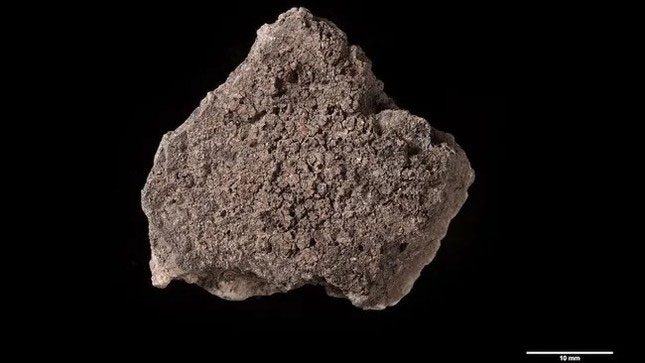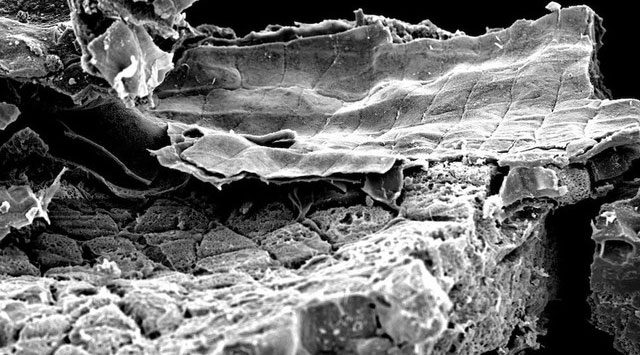The remnants of a burned porridge pot in Germany have confirmed that humans have been cooking porridge for 5,000 years.

This ceramic shard contains 5,000-year-old charred food. (Photo: BIAX, Netherlands).
According to a study recently published in the journal PLOS One, archaeologists made this discovery after examining a refuse heap that included mixed ceramic fragments at a Neolithic settlement considered one of the oldest villages in Germany.
Chemical analyses of the residues found on the ceramic shards revealed traces of various ancient grains, including wheat and barley.
Kubiak-Martens from the University of Kiel, Germany, stated: “A ceramic fragment was part of a thick-walled pot, containing remnants of white goosefoot seeds, related to quinoa and rich in protein. There were also emmer grains, which taste sweet when sprouted. It seems that someone mixed the grains with protein-rich seeds and cooked them with water.”

A microscopic image of the internal microstructure of the food residue shows emmer grains. (Photo: L. Kubiak-Martens, BIAX).
While there is evidence of humans grinding wild oats, possibly to make flour, as far back as 32,000 years ago in Italy, the newly described broken pot may represent the earliest recorded attempt to cook porridge (albeit a failed one).
A separate ceramic fragment containing animal fat residue—likely milk—was absorbed into the clay.
Kubiak-Martens noted: “The sprouted grains also indicate when they were harvested, which means they sprouted around late summer. At that time, they couldn’t store the grains and had to use them immediately after harvesting.”
While previous analyses of soil samples have provided evidence of cooking with ancient grains and seeds during this period, this study marks the first time researchers have found charred food residues on a Neolithic ceramic vessel in Germany, offering insights into the diet of ancient humans.
Through this, researchers concluded that thousands of years ago, humans already knew how to cook porridge for consumption.


















































